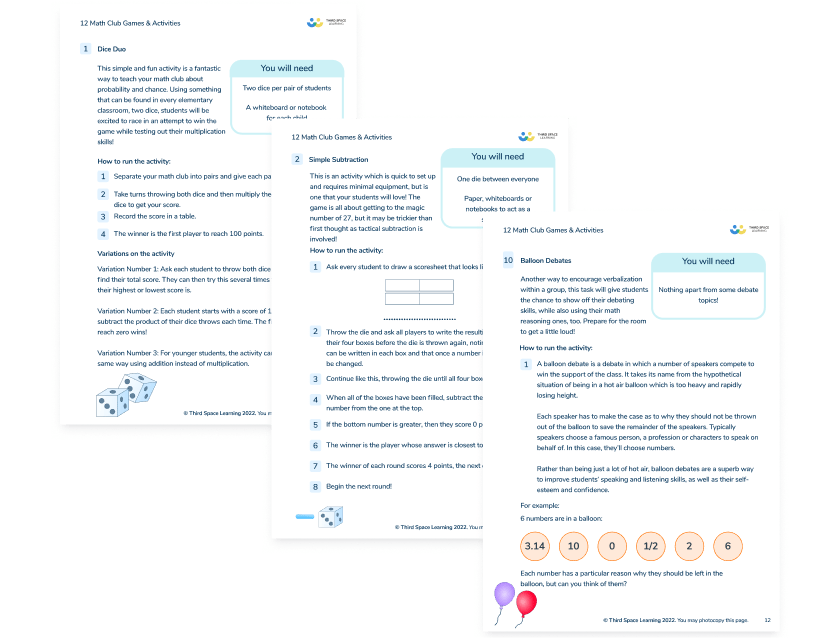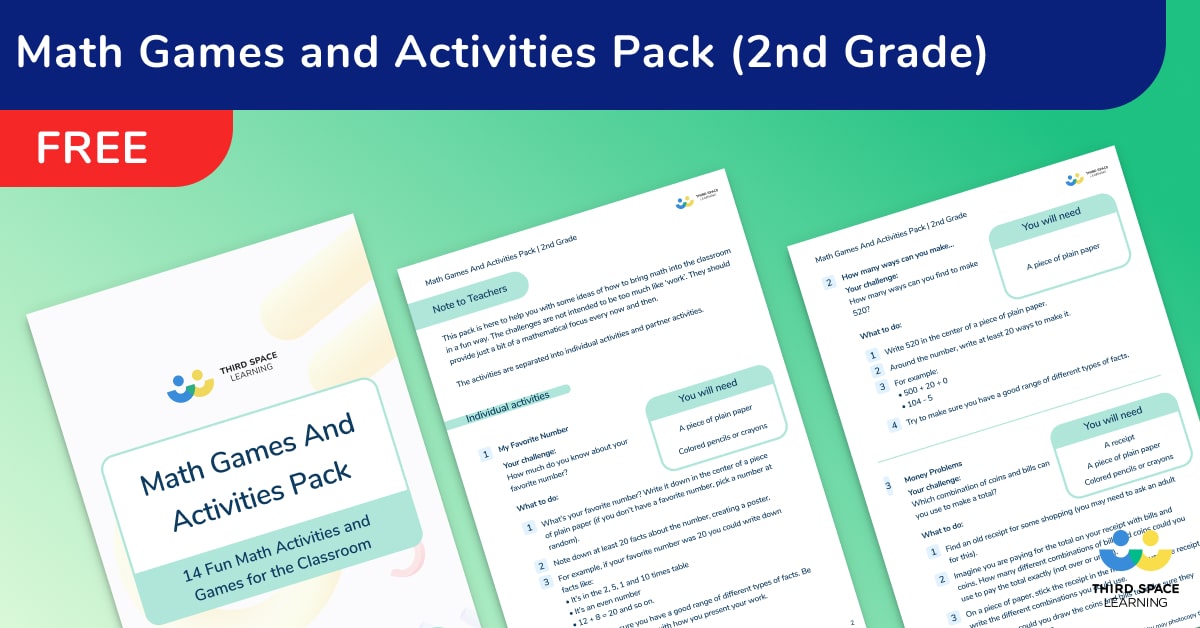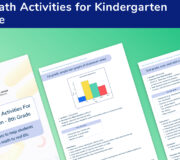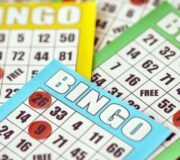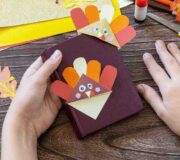Math Games For Grade 2: Fun, Free Math Activities (No Screens Required!)
Math games for grade 2 provide an essential bridge between the playfulness of math in pre-k, kindergarten, and 1st grade and the more rigorous math skills that get introduced later in elementary school.
Children love playing games, whether that’s just running around playing tag at recess or sitting down for an afternoon’s board game at home. Mathematical learning games harness the fun and motivation of ‘normal’ games and when incorporated into an elementary school math lesson, turn ordinary class work into something more interactive, more fun, and potentially more memorable.
- When to use second grade math games
- How to use these 2nd grade math games
- Place value battle
- Guess my number
- Addition and subtraction battle
- What shape am I?
- Mental addition and subtraction game: bowling
- Place value game: sorting and matching
- Place value two digit number game: in the bucket
- Salute
- Multiplication Bingo Addition and subtraction bingo
- The Yes/No Game
For any math game skeptics among you, you may be interested in reading about the arguments for and against ‘making math fun,’ and also the science of learning and memory in the classroom. Used appropriately, fun math games can hit the sweet spot of supporting children to learn effectively while being enjoyable and engaging.
See also:
14 Fun Math Games and Activities Pack for 2nd Grade
14 math games and activities for your 2nd graders to complete independently or with a partner
Download Free Now!When to use second grade math games
In second grade, math games are often seen as a ‘filler’ activity, or something to do at the end of the year, but educational games in the classroom can be so much more. Math games are also fantastic for enabling children to explore fundamental math facts and they can allow children to take learning further, through the deepening of mathematical understanding and reasoning skills.
They provide opportunities for math practice, whether they act as a starter activity, the main activity, as an alternative to a worksheet, or a chance to consolidate learning at the end of the lesson. Teachers are able to sit back and observe the games, making an assessment of children’s understanding in the process.
It is important that young learners are provided with repeated opportunities to play the same games. This is because the mere act of learning a new game will contribute to the cognitive load of the math activity. The sooner the rules of the game are internalized, the quicker the children’s focus will be on the math involved.
How to use these 2nd grade math games
We hope this collection of games can help strengthen second grade math skills.There is absolutely no expectation that you should try out all these math games with your 2nd graders, but we hope that the list below gives you enough fun games to draw on whenever you’re looking to develop or practice mathematical skills at school – or provide some ideas for home learning.
The math games in this article are geared towards grade 2, however they can easily be adapted to fit other ages. One of the easiest ways to increase the level of challenge of any math activity or math problem is to change all the whole numbers into decimal numbers or fractions or incorporate more three-digit numbers. Alternatively, they can be made easier by giving students a number line, a hundreds chart or manipulatives, such as a base ten.
- Math games for grade 3
- Math games for grade 4
- Math games for grade 5

Meet Skye, the voice-based AI tutor making math success possible for every student.
Built by teachers and math experts, Skye uses the same pedagogy, curriculum and lesson structure as our traditional tutoring.
But, with more flexibility and a low cost, schools can scale online math tutoring to support every student who needs it.
Find out morePlace value battle
This is a good 2nd grade math game for helping children understand the math concept of place value and how the position of a digit in a number affects its value. In 2nd grade, children are expected to recognize the place value of each digit in a 3-digit number, but the game can be adapted for different age groups by changing the number of digits in the number.
What you will need to play:
- 2 or more players
- A set of 0-9 digit cards
- Place value baseboard (hundreds, tens, and ones)
How to play:
- This can be played in pairs or small groups.
- Shuffle the 0-9 digit cards and place them down on the table.
- The first person chooses a card and each player decides which column of their baseboard to write the number.
- Then the next player chooses a card and each player again chooses which column to write the number in.
- This continues until three numbers have been selected and each player has written the 3 numbers into different columns on the baseboard.
- The aim of the game is to be the player with the largest number once all 3 have been chosen.
- The winner gets a point and the children play again.
- The overall winner is the first person to score 10 points.
- This can be played with just the children, or the teacher can join in as well. The class has to work as a team, trying to choose the best column to place their number, to try and beat the teacher.
Guess my number
In this math game, children calculate solutions to a problem by using the information available to them. They need to identify the missing number through the information they pick up on one number in the question and the answer. It is a much more fun way to solve missing number calculations than the traditional worksheet method.
What you will need to play:
- 3 players – 2 playing and 1 leading
- A set of 1-10 digit cards
How to play:
- Lay the 10 cards face down on the table.
- Each player selects a card and without looking at it, holds it to their forehead, so the other player can see it.
- The child chosen to lead the game calls out a statement about the 2 cards, such as ‘the 2 numbers added together equals…’ or ‘the 2 numbers multiplied together equals…’
- Each child has to look at their partner’s card to work out what their own number must be.
- The winner is the first one to call out the correct number.
Addition and subtraction battle
Second graders need to work hard to master addition and subtraction. This is a quick, simple addition and subtraction game to get children to practice their sums but also having fun through the competitive element in getting to the answer first. The game can be adapted to take out the speed element for any children who find the speed aspect a challenge.
What you will need to play:
- 2 players
- A set of playing cards, including Jacks, Queens and Aces (Ace = 1, Jack = 11 and Queen = 12)
How to play:
- Share between the 2 players, so they make 2 piles, face down on the table.
- At the same time, both players turn over a card from their pile and place it in the middle of the table.
- The aim of the game is to add or subtract both numbers together and be the first to call out the answer.
- The first person to call out the correct answer gets to keep the cards.
- The winner at the end of the game is the person who has collected the most cards.
- This game can also be adapted as a multiplication game for your advanced 2nd graders.
What shape am I?
This geometry game is good for getting children thinking about the properties of shapes. It can be played as either a 2D or a 3D shape game.
What will you need to play?
- 2 or more players.
- Pictures of 2D or 3D shapes for children who need them.
How to play:
- Each player chooses a shape and writes 5 statements about their shape.
- The aim of the game is to be the person who asks the least number of questions to work out the other player’s shape.
- Players need to make their first statements vague to encourage the other player to ask more questions. e.g. ‘My shape is 2D’, ‘My shape has 2 lines of symmetry’
- After a player receives a statement on the mystery shape, they can choose to make a guess, or ask for another statement. If they guess correctly after the first statement, they get the full 5 points. If they guess after two statements, they get 4 points, etc…..
- If they make a guess and it is incorrect, they receive 0 points for that round.
- The aim of the game is to be the player with the most points at the end of the game.
Mental addition and subtraction game: bowling
This multi-digit subtraction and multi-digit addition game is a fun, active way of practicing subtraction facts using subitizing and mental addition.
What you will need to play:
- 2 or more players
- A set of 6 bottles (to act as pins) with circle stickers set out in patterns.
- A tennis ball
- Paper and pen
How to play:
- Set out the ‘bowling pins’ (water bottles)
- Children take turns to bowl their ball.
- They check the pins that have been knocked over and add together the total on each pin.
- If they are correct, they get to keep the score from the fallen pins. This is recorded.
- The winner is the player with the most points at the end of the game.
Place value game: sorting and matching
Primary students need to be able to identify and represent numbers using objects and pictorial representations. This sorting and matching activity is a good way to practice this skill.
What you will need to play:
- 1 player
- Multi-link cubes
- Base 10 blocks
- Using the multi-link cubes, children make stacks of varying sizes, from 1 to 10 cubes in length.
- Ask children to order the stacks of cubes from smallest to largest.
- Once this is complete, ask the child to turn away, mix up the stacks and add some base 10 blocks.
- Children need to match up the base 10 blocks with the corresponding stack of cubes.
- Children working at higher difficulty levels can be challenged further by sorting them into 2 groups – odd and even numbers.
- 2 players
- 2 dice
- Paper and pencil
How to play:
- Both players throw 2 dice and add the 2 numbers together. The player with the highest answer wins the round
- The winner is the first player to reach 10 points.
- The game can be adapted by using 10 sided dice or by adding a third dice.
Place value two digit number game: in the bucket
In first grade, children are expected to identify and recognize each digit in a 2-digit number. This game is great for helping children to understand place value.
What you will need to play:
- 2 or more players.
- 2 boxes or buckets
- Bean bags
- A selection of 2-digit number cards from 10 to 99
How to play:
- Player one takes a 2-digit number card
- The aim of the game is to use bean bags to make that 2-digit number.
- The 2 boxes/buckets represent the tens and the ones. Children need to try and get the correct number of bean bags into each box to represent the tens and the ones.
- If the card selected has 54 on it, the player needs to attempt to get 5 bean bags in the ‘tens’ box and 4 bean bags in the ‘ones’ box.
- Players score a point if they get the bean bags into the correct boxes.
- This game can also be played as a relay race with 2 teams competing against each other.
Salute
This simple game is all about bringing together word problems and verbalization of math.
What you need to play:
- Two willing participants
- Cards numbered 1-10 (these can be made from a sheet of paper)
How to play:
- Step 1: The game starts with the two players facing each other. Each person selects a numbered card and sticks it on their forehead, so the other player can see.
- Step 2: The person leading the game gives a statement, such as what the sum of the two numbers is, the difference between the two or the product of the two, etc…..
- Step 3: Each player has to work out what number is on their own card, based on what is written on the other person’s head and the rule given.
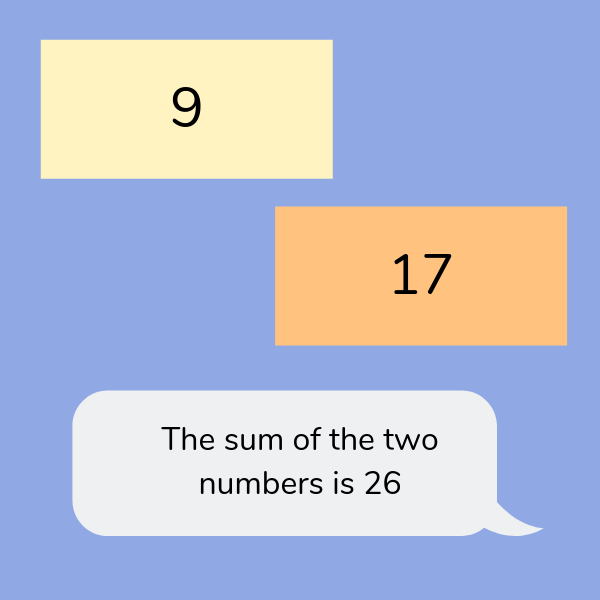
Take Salute a step further using numbers up to 20.
Multiplication Bingo Addition and subtraction bingo
Bingo is a perennially fun game that can be enjoyed by people of all ages, and this version puts a mathematical twist on this classic game as a way to boost addition and subtraction skills.
What you need to play:
- Paper to write numbers down on
How to play:
- Step 1: In this mathematical version of the game, all players write down 5 numbers.
- Step 2: A third person can lead the game and call out addition and subtraction questions, or they can be written on cards, jumbled up in a pile for players to take turns picking and reading out.
- Step 3: If the player has an answer to the question on their bingo board, they can cross it out. First person to cross out all their numbers is the winner.

The Yes/No Game
This is another simple elementary school math game that kids will love. It’s a good way to practice with 2D shapes and 3D shapes.
What you need to play:
- A series of cards/pieces of paper
How to play:
- Step 1: Both players put a card on their head. It could have a number on it, a shape etc….
- Step 2: The first player asks a question which can only be answered with ‘yes’ or ‘no’. e.g. ‘Am I odd?’ ‘Am I under 20?’ ‘Do I have 4 sides?’ etc…..
- Step 3: They keep asking questions until they get the answer correct or they run out of turns (you can set the number of turns they get at the beginning of the game). Then it is time for the other player to have a turn.
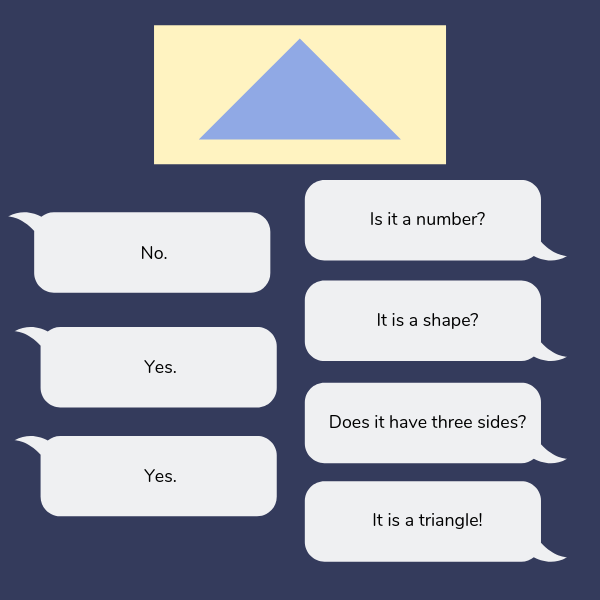
See also:
- 33 Mental Math Strategies Every Child Should Know
- Nail Your Number Facts
- Teaching Multiplication Charts In Elementary
- 26 Whole Class Math Games
If you want to engage children more fully with math, Third Space Learning’s online AI math tutoring provides one-on-one support that’s personalized to children’s needs. In addition to online tutoring, Third Space Learning offers an extensive range of printable worksheets, flashcards, teaching, and learning resources.
Do you have students who need extra support in math?
Skye—our AI math tutor built by experienced teachers—provides students with personalized one-on-one, spoken instruction that helps them master concepts, close skill gaps, and gain confidence.
Since 2013, we’ve delivered over 2 million hours of math lessons to more than 170,000 students, guiding them toward higher math achievement.
Discover how our AI math tutoring can boost student success, or see how our math programs can support your school’s goals:
– 3rd grade tutoring
– 4th grade tutoring
– 5th grade tutoring
– 6th grade tutoring
– 7th grade tutoring
– 8th grade tutoring
